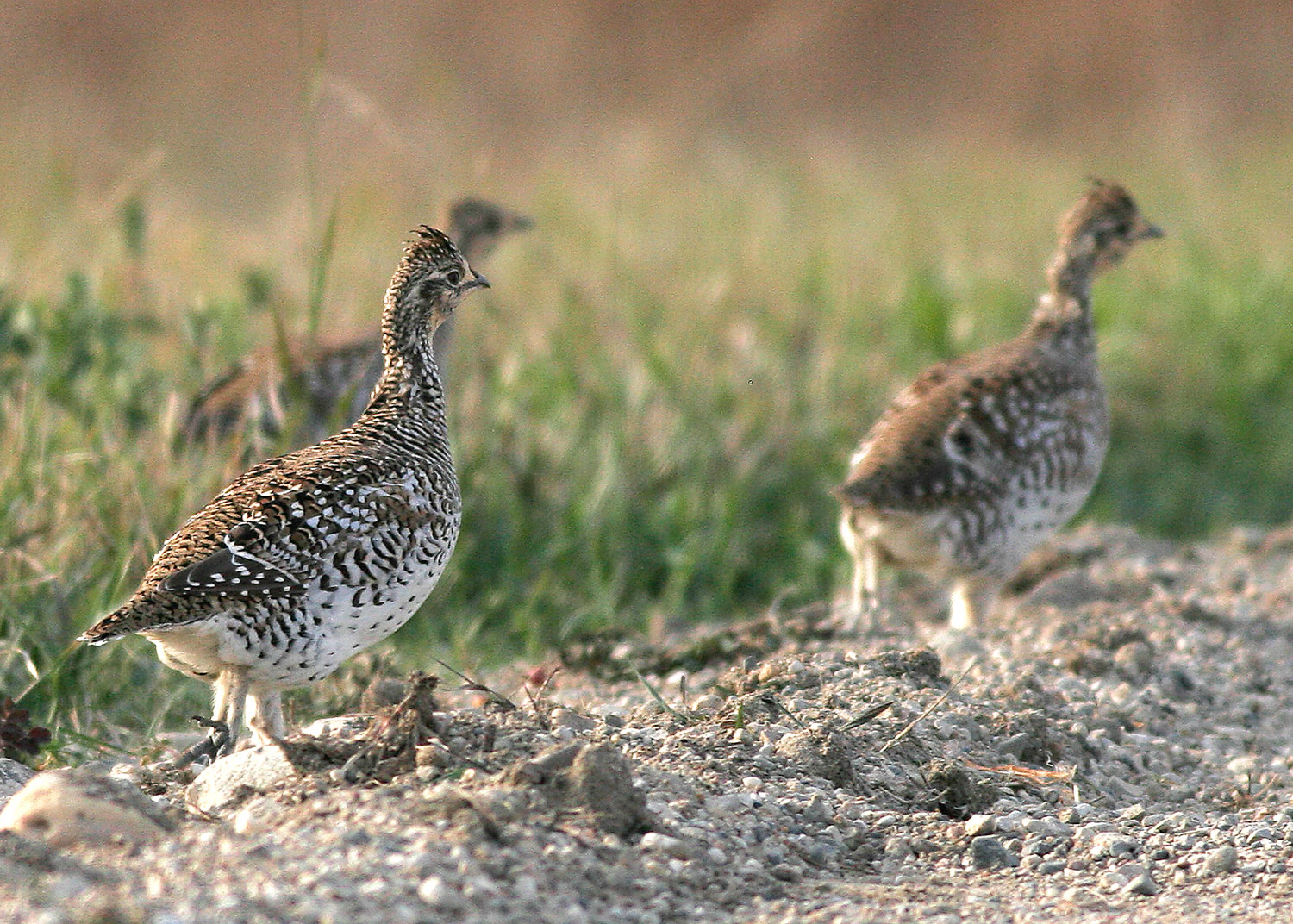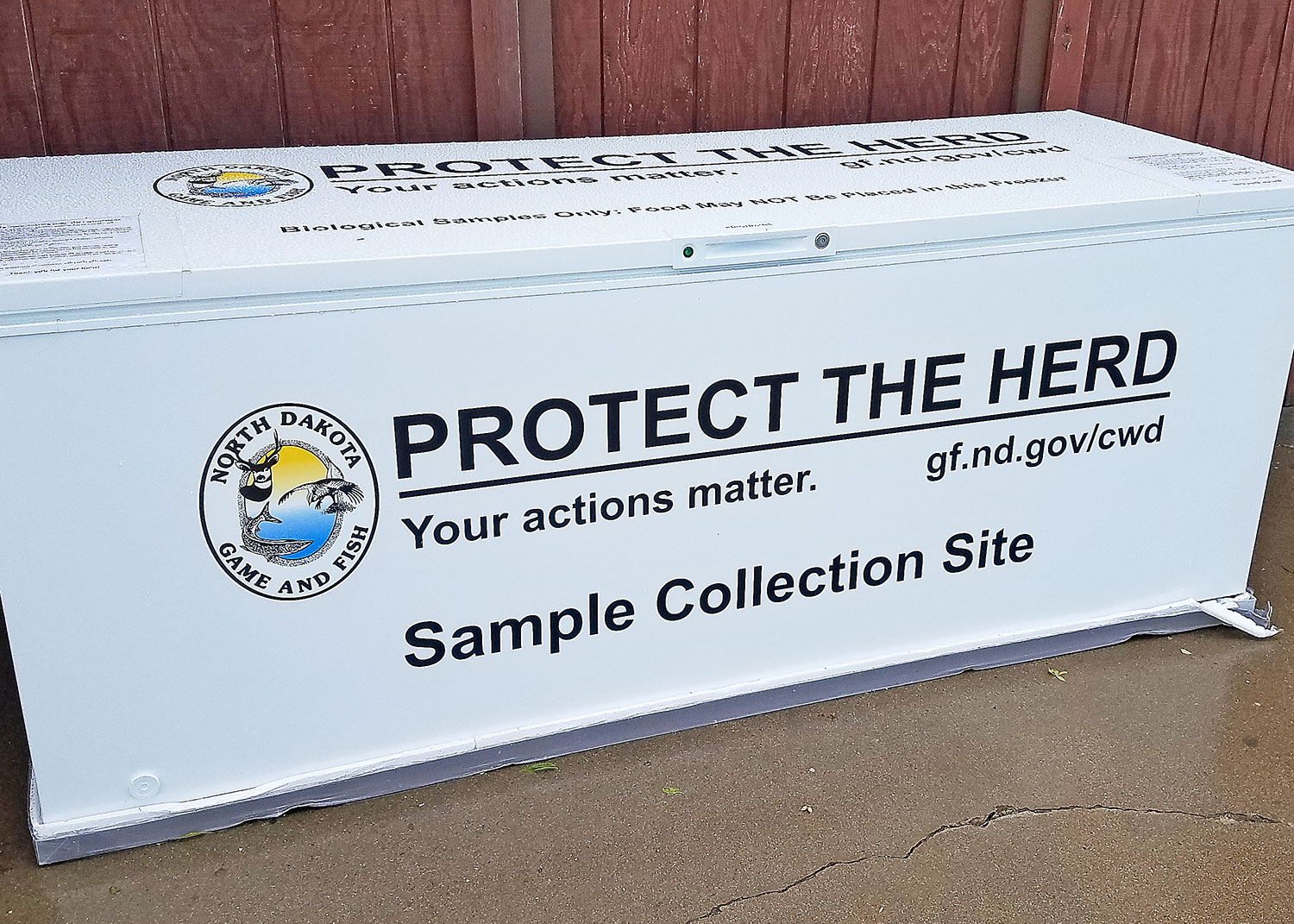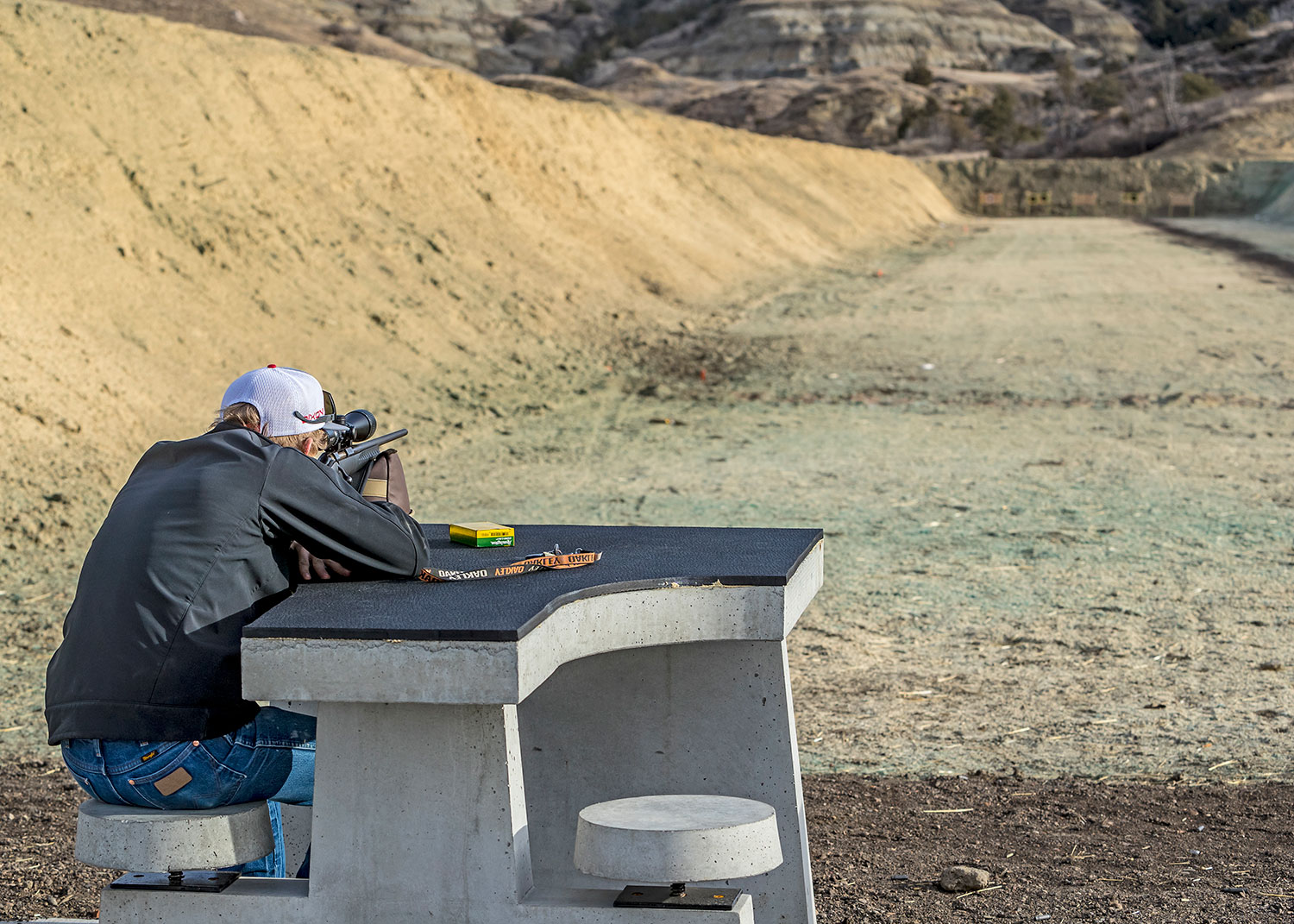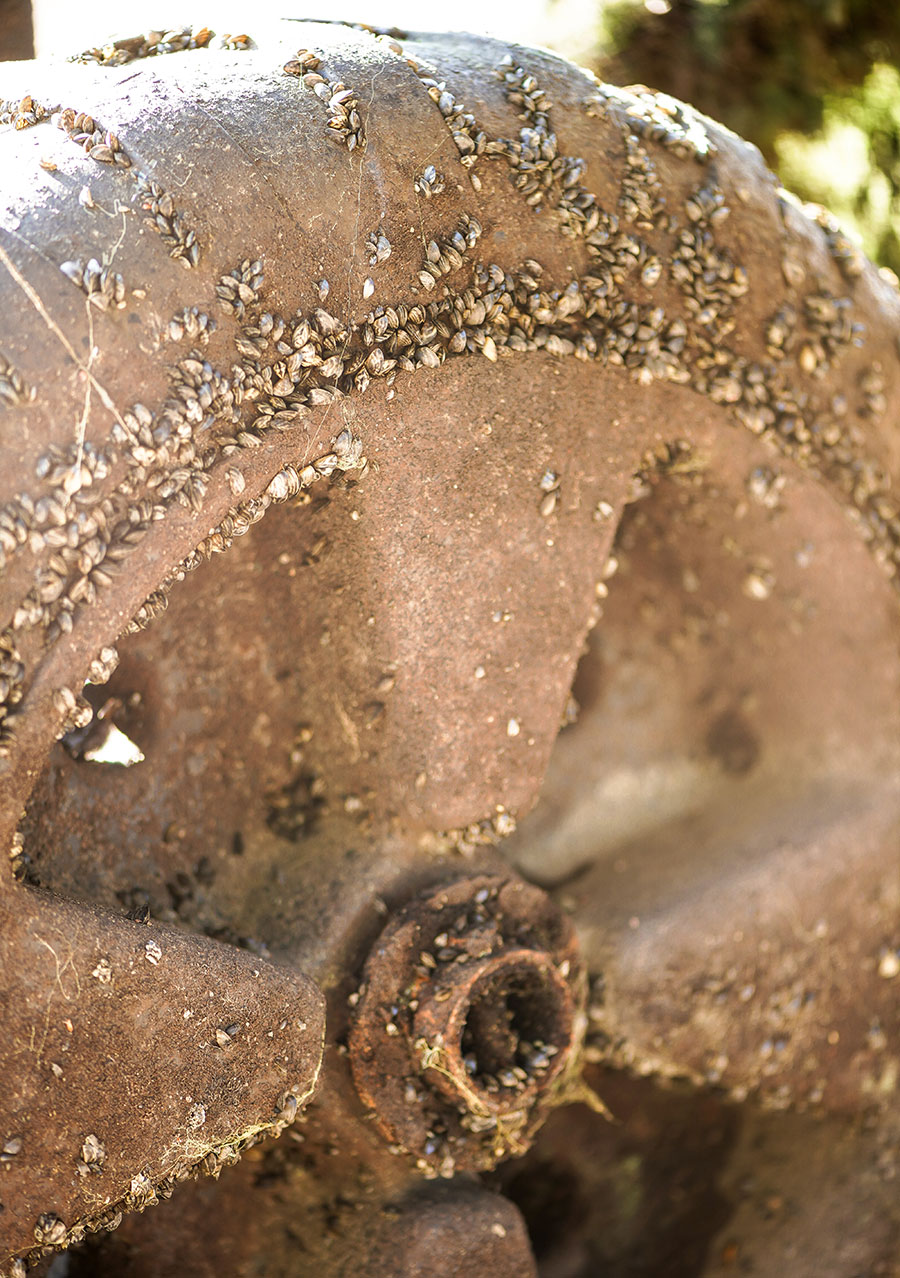
Buffaloberry Patch

Sharp-tailed grouse
Pheasant, Sharptail, Partridge Numbers Up
North Dakota’s late-summer roadside surveys indicated total pheasant, sharp-tailed grouse and Hungarian partridge numbers are up this fall from last year.
R.J. Gross, Game and Fish Department upland game biologist, said the survey showed total pheasants observed per 100 miles were up 10% from last year. In addition, broods per 100 miles were up 17%, while the average brood size was down 5%. The final summary was based on 275 survey runs made along 101 brood routes across North Dakota.
“This was the first year in a while that we’ve had good residual cover to start the year, and good weather for nesting and brood-rearing,” Gross said.
Statistics from the northwest indicated pheasants were up 49% from last year, with broods up 75%. Observers recorded five broods and 39 pheasants per 100 miles. Average brood size was six.
Results from the southeast showed birds were up 32% from last year, and the number of broods up 27%. Observers counted six broods and 51 birds per 100 miles. The average brood size was six.
Statistics from southwestern North Dakota indicated total pheasants were down 7% and broods observed up 2% from 2018. For every 100 survey miles, observers counted an average of six broods and 41 pheasants. The average brood size was five chicks.
The northeast district, generally containing secondary pheasant habitat with lower pheasant numbers compared to the rest of the state, showed two broods and 15 pheasants per 100 miles. Average brood size was four.
Sharptails observed per 100 miles were up 113% statewide from 2018, and partridge were up 58%.
Jesse Kolar, Department upland game management supervisor, said sharptail numbers are still roughly 50% below 2012-15.
“However, we observed slight increases in all metrics this year during our surveys, especially in counties east of the Missouri River where we observed the highest numbers of grouse per 100 miles since 2013,” he said.
Brood survey results showed statewide increases in number of grouse and broods observed per 100 miles, and in average brood size. Observers recorded 1.7 sharptail broods and 13.6 sharptails per 100 miles. Average brood size was five.
Although partridge numbers have shown a slight increase, Gross said most of the partridge harvest is incidental while hunters pursue grouse or pheasants. Partridge densities in general, he said, were too low to target. Observers recorded 0.5 partridge broods and 6.8 partridge per 100 miles. Average brood size was 10.
General Game and Habitat License Required
Deer hunters are reminded of a state law that requires hunters to purchase a general game and habitat license before receiving a deer license.
North Dakota Century Code 20.1-03-02 reads, “a person may not acquire any resident or nonresident license to hunt, catch, take or kill any small game or big game animal unless that person first obtains an annual general game license.”
The North Dakota Game and Fish Department will only mail deer licenses after the general game and habitat license is purchased.
The general game and habitat license can be purchased online by visiting My Account.
Also, it’s important to locate your deer license and check it for accuracy, making sure the unit and species is what is intended.
Deer hunters who can’t find their deer license and who have already purchased their general game and habitat license, can get a replacement license by printing out a duplicate (replacement) license application from the Game and Fish website, or can request an application by calling 701-328-6300.
The form must be completed and notarized, and sent back to the Department with the appropriate fee.
Game and Fish Allocates Five Bighorn Sheep Licenses
The Game and Fish Department allocated five bighorn sheep licenses for the 2019 hunting season, two more than last year.
Three licenses were issued in unit B1 and a portion of B3, and one license is valid for units B3 and B4. Also, one license, as authorized under North Dakota Century Code, was auctioned in March by the Midwest Chapter of the Wild Sheep Foundation, from which all proceeds are used to enhance bighorn sheep management in North Dakota.
The number of once-in-a-lifetime licenses allotted to hunters is based on data collected from the Game and Fish Department's summer population survey. Brett Wiedmann, Department big game management biologist, said results showed a 10% decline in ram numbers from 2018, with the population dominated by young rams.
“Our objective this hunting season is to reduce the number of rams in the southern badlands, to lessen the risk of transmitting disease to the northern population,” Wiedmann said, while mentioning the concern is the ongoing effects of the bacterial pneumonia outbreak that was first detected in 2014, which resulted in a loss of 15-20% of the adult population. “Moving forward, our intention is to have the southern badlands wild sheep herd as a discussion item during our fall district advisory board meetings.”
Wiedmann noted there are more than 300 bighorn sheep north of Interstate 94, but only 20 south of the interstate.
A record 15,518 people applied for a bighorn sheep license in 2019.

Williston Area Bowhunters Asked to Help With CWD
The North Dakota Game and Fish Department is asking bowhunters who harvest a deer in gun hunting units 3A1 and 3B1 to help the Department’s chronic wasting disease surveillance efforts by submitting the head of their animal for testing.
Heads may be dropped off in freezers at the Game and Fish district office in Williston, and at the Divide County sheriff’s office in Crosby (north side of building). Hunters wishing to keep the head may have it sampled at the Williston office during business hours. Taxidermists in Williston are also assisting in the effort by saving heads throughout the season.
Instructions and information are posted at the drop-off sites. Test results will be provided to hunters within 2-3 weeks. Additional drop-off sites will be available throughout the region during the deer gun season in November.
CWD is a fatal disease of deer, moose and elk that can cause long-term population declines if left unchecked. Annual surveillance for CWD is critical for determining the spread of the disease and if management actions have been effective.
More information on CWD, including information about testing, is available at the Game and Fish website.

Prepping for the Deer Gun Season
With North Dakota’s deer gun season opening in early November, many hunters will be looking for a place to sight in their firearms to get ready for the season.
The North Dakota Game and Fish Department manages five gun ranges on wildlife management areas in the state, and also partners with many local clubs around North Dakota to offer many other public shooting facilities.
“We have these ranges for a variety of reasons. One is just to give people a place to shoot,” said Marty Egeland, Department education supervisor. “In addition to that, it also allows them to hone their skills and to sight in firearms prior to deer gun season.”
The five gun ranges managed by the Game and Fish Department include:
- Lewis and Clark WMA, located 6 miles southwest of Williston.
- Little Heart (Schmidt) Bottoms, located 12 miles south of Mandan off ND Highway 1806.
- MacLean Bottoms, located 2 miles south of ND Highway 1804, about 15 miles southeast of Bismarck.
- Riverdale WMA, located 2 miles southwest of Riverdale.
- Wilton Mine WMA, located 2 miles east of Wilton.
The Department may periodically close these ranges for routine maintenance and improvements. The current status of each range can be found on the Department’s website.
The website also provides a detailed listing of other shooting facilities in North Dakota.
Help Needed in Hunt for ANS
The North Dakota Game and Fish Department is asking water recreationists and property owners to check for zebra mussels and other aquatic nuisance species when removing boat lifts, docks and other equipment from area lakes.
Jessica Howell, Department ANS coordinator, said zebra mussels attach to hard surfaces left in the water for long periods of time, first settling in tight spaces and areas that are protected from sunlight. She said this can make searching for them in the lake difficult when there are few mussels present.
“It makes it easier to do a thorough search on equipment when it’s taken out of the water in the fall,” Howell said. “Pay special attention to wheel wells, right angles on frames, and areas that are otherwise protected from sunlight. Feel for attached organisms that have small hair-like structures holding them in place. Small mussels can feel like rough sandpaper, and adults can be as large as 2 inches long.”
Howell said if you think you’ve found a zebra mussel, take photos, write down any relevant information such as how many were found and where, and report it online, or email Howell at jmhowell@nd.gov.
Zebra mussels are native to the Black and Caspian seas and were introduced to the United States in the mid-1980s. Since then, they have caused massive damage to infrastructure, increased costs to electric and water users, and altered the ecosystems into which they were introduced. They were first discovered in North Dakota in the Red River in 2015 as a result of downstream drift from infested Minnesota lakes. Most recently, zebra mussels were discovered earlier this year in Lake Ashtabula.
“Help stop the spread by reporting anything that seems out of place, and remember to clean, drain and dry equipment before moving between waters,” Howell said.

In June, an angler discovered a zebra mussel in Lake Ashtabula, an impoundment on the Sheyenne River in Barnes and Griggs counties in east central North Dakota. Following inspections of Lake Ashtabula revealed well-established populations of zebra mussels of various ages throughout the lake. At 5,200 aces, Lake Ashtabula is operated by the U.S. Army Corps of Engineers. The provided photograph, taken in September, shows a corps boat dock pulled from the water covered in zebra mussels. Also in September, and not surprisingly, state officials confirmed the presence of the invasive mussels in the Sheyenne River. The mussels were discovered on a low-head dam on the Sheyenne River near Valley City. Jessica Howell, North Dakota Game and Fish Department aquatic nuisance species coordinator in Jamestown, said since the invasive mussels were discovered in Ashtabula months before, it was just a matter of time before the mussels would show up in the Sheyenne River.
Hunting from Duck Boats Safely
Waterfowlers hunting from boats are encouraged to wear properly-fitted life jackets while on the water.
Hunting jackets with built-in life jackets are light and comfortable to wear. In addition, wearing a life jacket will not only keep the overboard hunter afloat, but also slows the loss of critical body heat caused by exposure to cold water.
Capsizing and falling overboard from small boats are the most common types of fatal boating accidents for hunters.
Signs

Hunters may see some new signs at assorted PLOTS tracts around the state this fall. North Dakota Game and Fish Department private land personnel installed the signs, such as the one pictured that reads, “Your Hunter Dollars at Work,” to remind hunters about the important role their license dollars play in development of the Department’s walk-in access hunting program. Some other signs that hunters may see on PLOTS tracts read: “Respect the Land. Respect the Landowner,” Hunt Ethically. Hunt Safe,” and “Leave Gates as You Found Them.” In the photo provided, Levi Jacobson, Department private land biologist, installs a sign at a PLOTS tract east of Bismarck.
Whooping Crane Migration
Whooping cranes are in the midst of their fall migration and sightings will increase as they make their way into and through North Dakota over the next several weeks. Anyone seeing these endangered birds as they move through the state is asked to report sightings so the birds can be tracked.
The whooping cranes that do make their way through North Dakota each fall are part of a population of about 500 birds that are on their way from nesting grounds at Wood Buffalo National Park in Canada to wintering grounds at Aransas National Wildlife Refuge in Texas, a distance of about 2,500 miles.
Whoopers stand about five feet tall and have a wingspan of about seven feet from tip to tip. They are bright white with black wing tips, which are visible only when the wings are outspread. In flight they extend their long necks straight forward, while their long, slender legs extend out behind the tail. Whooping cranes typically migrate singly, or in groups of 2-3 birds, and may be associated with sandhill cranes.
Other white birds such as snow geese, swans and egrets are often mistaken for whooping cranes. The most common misidentification is pelicans, because their wingspan is similar, and they tuck their pouch in flight, leaving a silhouette like a crane when viewed from below.
Anyone sighting whoopers should not disturb them, but record the date, time, location and the birds' activity. Observers should also look closely for and report colored bands which may occur on one or both legs. Whooping cranes have been marked with colored leg bands to help determine their identity.
Whooping crane sightings should be reported to U.S. Fish and Wildlife Service national wildlife refuge offices at Lostwood, 701-848-2466, or Long Lake, 701-387-4397; the North Dakota Game and Fish Department in Bismarck, 701-328-6300; or to local game wardens across the state. Reports help biologists locate important whooping crane habitat areas, monitor marked birds, determine survival and population numbers, and identify times and migration routes.
Motorists Warned to Watch for Deer
Motorists are reminded to watch for deer along roadways this time of year because juvenile animals are dispersing from their home ranges.
October through early December is the peak period for deer-vehicle accidents. Motorists are advised to slow down and exercise caution after dark to reduce the likelihood of encounters with deer along roadways. Most deer-vehicle accidents occur primarily at dawn and dusk when deer are moving around.
Motorists should be aware of warning signs signaling deer are in the area. When you see one deer cross the road, look for a second or third deer to follow. Also, pay attention on roadways posted with Deer Crossing Area caution signs.
Deer-vehicle accidents are at times unavoidable. If an accident does happen, law enforcement authorities do not have to be notified if only the vehicle is damaged. However, if the accident involves personal injury or other property damage, then it must be reported.
In addition, a permit is still required to take parts or the whole carcass of a road-killed deer. Permits are free and available from game wardens and local law enforcement offices.
A few precautions can minimize chances of injury or property damage in a deer-vehicle crash.
- Always wear your seat belt.
- Don’t swerve or take the ditch to avoid hitting a deer. Try to brake as much as possible and stay on the roadway. Don’t lose control of your vehicle or slam into something else to miss the deer. You risk less injury by hitting the deer.
- If you spot deer ahead, slow down immediately and honk your horn.
Waterfowl Hunters Reminded of ANS Regulations
Waterfowl hunters need to do their part in preventing the spread of aquatic nuisance species into or within North Dakota.
Waterfowl hunters must remove plants and plant fragments from decoys, strings and anchors; remove plant seeds and plant fragments from waders and other equipment before leaving hunting areas; remove all water from decoys, boats, motors, trailers and other watercraft; and remove all aquatic plants from boats and trailers before leaving a marsh or lake. In addition, hunters are encouraged to brush their hunting dogs free of mud and seeds.
Cattails and bulrushes may be transported as camouflage on boats. All other aquatic vegetation must be cleaned from boats prior to transportation into or within North Dakota.
In addition, drain plugs on boats must remain pulled when a boat is in transit away from a water body.
More ANS information, including regulations, is available on the North Dakota Game and Fish Department website.
Youth Waterfowl Hunting Trailer Available
The North Dakota Game and Fish Department and Ducks Unlimited co-sponsor a trailer full of waterfowl hunting gear that is available to families with young hunters.
Purchased by the Game and Fish Department’s Encouraging Tomorrow’s Hunters grant program, the trailer is designed for families who don’t have the appropriate gear for their young hunters to hunt waterfowl. The equipment is donated by Avery Outdoors.
Use of the trailer is free, and it is equipped with goose and duck decoys for field hunting, and two bags of floating duck decoys and marsh seats for hunting a wetland.
For more information, or to reserve equipment, contact the Ducks Unlimited office in Bismarck at 701-355-3500.
Order 2020 OUTDOORS Calendars
The North Dakota Game and Fish Department is taking orders for its North Dakota OUTDOORS calendar, the source for all hunting season and application dates for 2020. Along with outstanding color photographs of North Dakota wildlife and scenery, it also includes sunrise-sunset times and moon phases.
To order online, visit the Game and Fish website, or send $3 for each, plus $1 postage, to: Calendar, North Dakota Game and Fish Department, 100 N. Bismarck Expressway, Bismarck, ND 58501-5095. Be sure to include a three-line return address with your order, or the post office may not deliver our return mailing.
The calendar is the North Dakota OUTDOORS magazine’s December issue, so current subscribers will automatically receive it in the mail.
